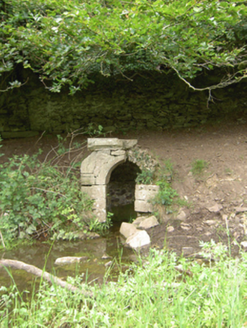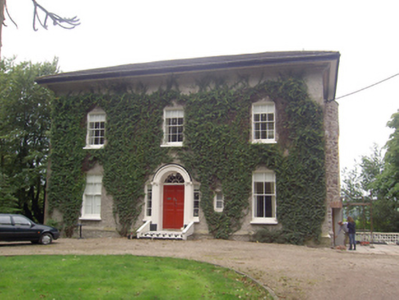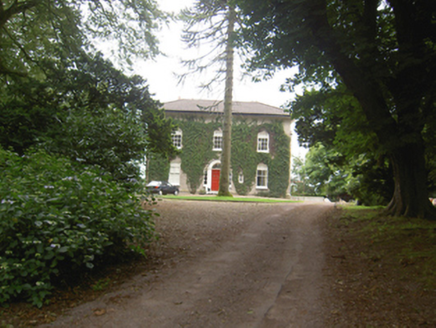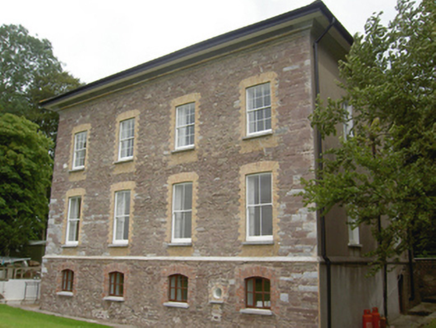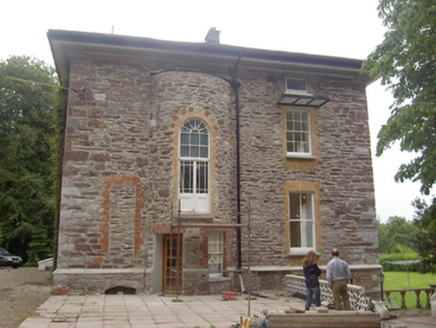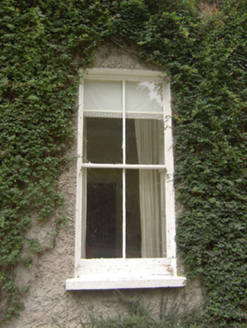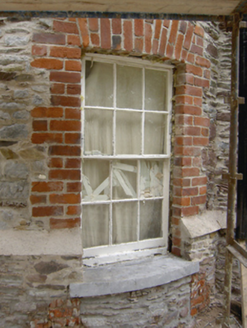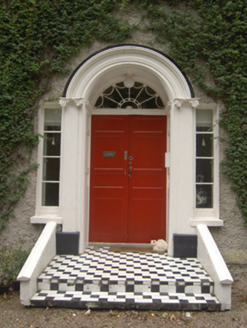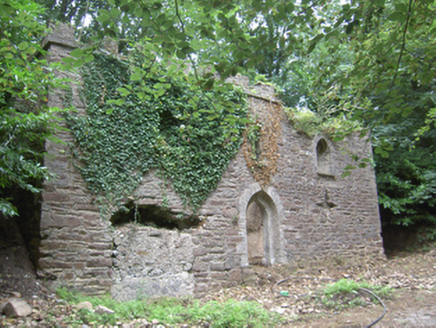Survey Data
Reg No
20907509
Rating
Regional
Categories of Special Interest
Architectural, Artistic, Historical, Social
Original Use
Country house
In Use As
Country house
Date
1720 - 1740
Coordinates
173199, 73894
Date Recorded
10/07/2007
Date Updated
--/--/--
Description
Detached three-bay two-storey over basement country house, built c. 1730, having bowed bay to north elevation. Skirt slate roof with overhanging sheeted eaves and carved stone and brick cornice. Roughcast rendered walls to front (east) elevation, exposed rubble limestone walls to rear (west) and north elevations. Square-headed window openings with painted stone sills and two-over-two pane timber sliding sash windows. Curved round-headed opening to bow to south elevation with round-headed fixed timber frame window with cobweb tracery and half-glazed timber panelled double-leaf doors. Round-headed door opening with timber panelled double-leaf doors and cobweb fanlight with carved timber doorcase comprising flanking pilasters with composite capitals supporting archivolt, flanked by sidelights. Detached former icehouse to west of site, rubble limestone walls with pointed arch niche to front elevation. Pointed arch stepped door opening with dressed limestone surround, now infilled. Circular access hole to first storey. Carved limestone spring head to south of icehouse with round-headed arch. Carved limestone square-profile gate piers with wrought iron double-leaf gates to west of site.
Appraisal
Substantial country house of elegant and lofty proportions remaining largely intact and retaining a number of distinguishing features. Particularly notable features include the carved limestone cornice, elegant doorcase and fanlight, and the finely executed curved opening to the bow. Bows are characteristic of the Cork region and this is a well preserved example of its type. The Gothic Revival style ice house is particularly interesting, its storage area accessible from an upper storey. Seat of the Newsom family in the mid-nineteenth century, the survival of these structures adds significantly to the architectural and social heritage of the area.
